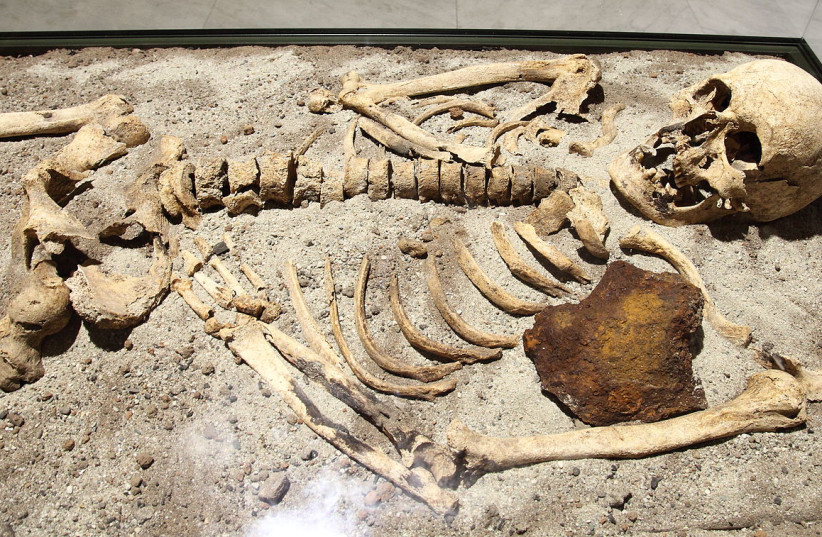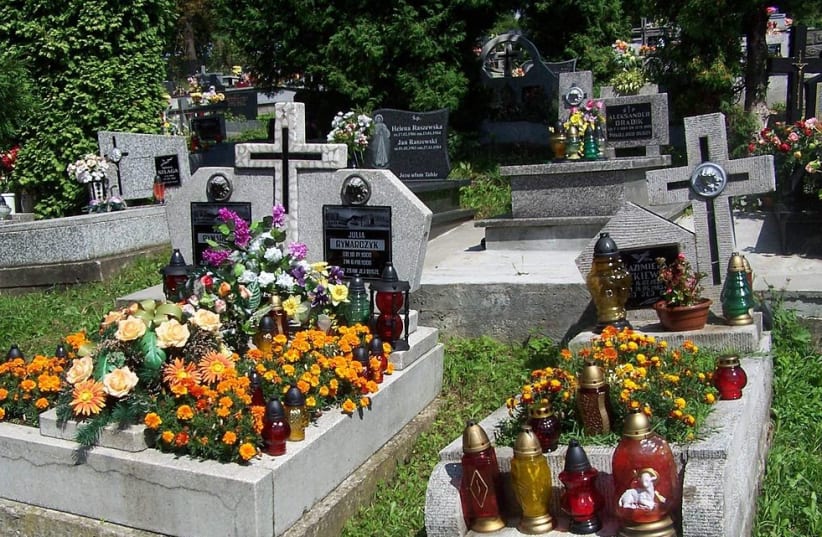The grave of a 17th-century "vampire" was uncovered by archaeologists in a small Polish village, complete with measures to ensure she could never rise from her grave to prey upon the people of Eastern Europe, Polish media outlet Nowa Trybuna Opolska (the New Opole Tribune) reported Friday.
While many other contemporary grave sites showed fear of vampires and other cultural equivalents of the infamous creatures of the night, this one was found to have been deliberately made vampire-proof, with methods taken to ensure the undead entity would not arise.
I know what you are... Vampire: A brief history of vampires in Poland
While history's most famous fanged bloodsucker, Count Dracula, hails from Transylvania, vampires are present in cultures throughout the world, and Poland is no exception.
In particular, female vampires are also associated with witches and striga/strzyga.
In Poland, people began to fear vampires at least as far back as the 11th century. There were fears that the dead would climb out of their graves, prowling the night as terrifying undead monsters that would drink the blood of the living.


This is also evidenced in certain rituals used to prevent vampires from rising from their graves.
Previous examples have been seen in Poland already. As noted by Heritage Daily, graves found in Krakow contained skeletons with their heads cut off in order to prevent resurrection. In Kamie Pomorskie, a corpse was found with a brick forced into the mouth.
But what happened here, in the village of Pień in southern Poland, is different: The woman buried in the grave was pinned down by a sickle on her throat in such a way that, if she rose from dead, her head would have been cut off, or at least injured. This isn't something wholly unprecedented, but it is rare.
And that wasn't all. According to the leader of the discovery team, Prof. Dariusz Poliński of Nicolaus Copernicus University, the woman also had her big toe on the left foot wrapped by a padlock, as noted by New Opole Tribune.
What does this all mean?
According to Poliński, it likely means that not only was this an anti-vampiric ritual — and indeed, it does match up with pre-established practices — but this woman was already considered a vampire when she died.
What we do in the shadows: How to identify a vampire
The exact method for how people were determined to be vampires in Poland is the subject of debate, but it is something researchers have studied.
In particular, strangers, like foreigners who were new to the area, have been theorized as people who could have been suspected to be vampires.
But that isn't necessarily the case. As noted in a 2014 study published in the peer-reviewed academic journal PLOS ONE, based on what they had been eating throughout their lives as determined by isotope ratios gleaned from tooth enamel, the suspected vampires they examined — were identified by the use of anti-vampiric rituals on their graves - were not foreigners, but locals who were part of the community.
So as for what caused this, scientists don't know, though the 2014 researchers said it may have been due to diseases.
What do scientists know about this latest female vampire whose grave was uncovered in Poland?
Well, for one thing, we know she was certainly rich. This is evidenced by silk fragments, jewelry and so on. Other graves found in the area in the past also seemed to have been the resting places of other people of higher status.
But whether this has to do with the mysterious unnamed woman being labeled a vampire is unknown.
Unfortunately, that currently remains an enigmatic mystery.
